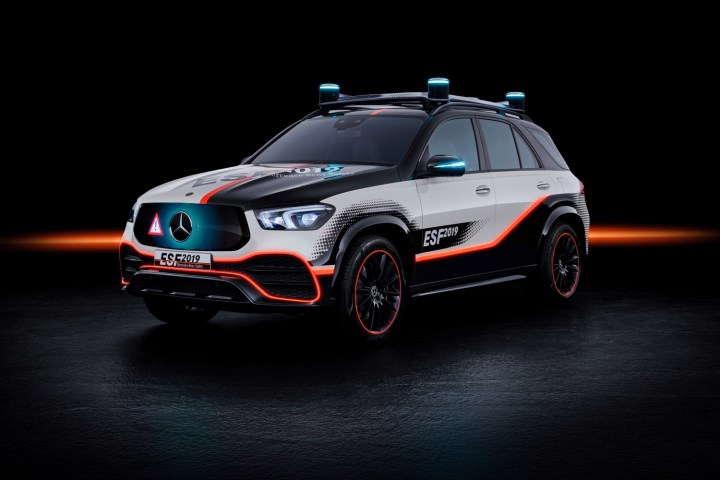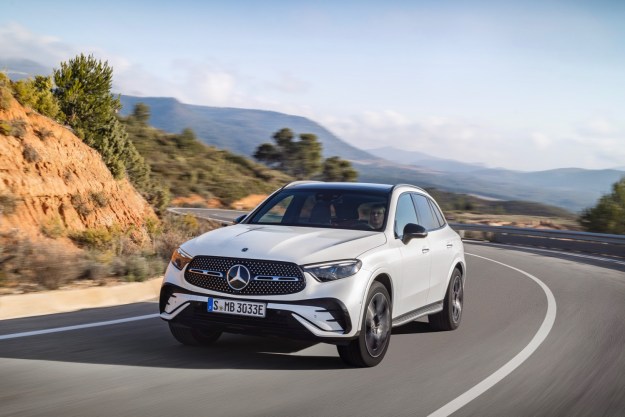
Before humans give up the wheel for good, Mercedes-Benz believes there will be a transitional period where people and machines share the workload. The German automaker’s Experimental Safety Vehicle (abbreviated ESF, for some reason) 2019 was designed to demonstrate how that could work. This safety-focused concept car is capable of driving itself, according to Mercedes, but also features safety tech to help human drivers.
Based on a Mercedes-Benz GLE, the ESF 2019 is capable of driving itself in most situations but still has a steering wheel and pedals. When the vehicle is in autonomous mode, they retract into the dashboard to lessen the possibility of injuries in a crash (yes, Mercedes acknowledges that even self-driving cars can crash). Mercedes moved the airbags around so that they will work regardless of how everything is positioned.
Human drivers communicate with each other through eye contact and hand gestures, but autonomous cars will need to find an alternative. The ESF 2019 uses lights in its grille to tell other road users what it is doing, and can activate strips of light along its sides to increase visibility while passing through intersections. In the event of a crash, a robotic road triangle can pop out of the back of the car and position itself to warn oncoming traffic. Another road triangle is built into the vehicle’s roof.
When it’s time for a human driver to take control, the ESF 2019 can tug on the driver’s seatbelt pretensioner if it senses the driver is approaching a curve too fast. If the car is stopped in a traffic jam and senses a vehicle approaching too fast from behind, it will automatically creep forward (assuming there is enough room) to give the following vehicle more room to stop. Many production cars have autonomous emergency braking, but it usually only works in a straight line. The ESF 2019 can apply the brakes while the car is turning. The feature is designed to prevent collisions with pedestrians or cyclists, who may not yield to a turning vehicle, and can easily get lost in blind spots.
The ESF 2019 also has what may be the most complex child seat ever. It can monitor a child’s vital signs and send live video to a dashboard screen when the car is stationary. Vital-sign information and live video can also be sent to smartphones via the Mercedes Me app. This isn’t the first time we’ve heard of a feature like this: A company called Vayyar claims to be developing a sensor that can track vehicle occupants’ heartbeats in real time.
It’s unclear what, if any, features from the ESF 2019 will make it to production. The SUV is the latest in a long line of Mercedes safety-car concepts going back to the 1970s. The last ESF vehicle debuted in 2009. In the ensuing decade some of its features, such as seatbelt airbags and the Pre Safe Impulse Side lateral-collision system, have entered series production, Mercedes noted. So it’s possible that in a decade’s time some of the features of the ESF 2019 will be available on Mercedes production cars as well.
Editors' Recommendations
- Mercedes G580 electrifies an off-road icon
- 2025 Mercedes-Benz EQS sedan gets new face, bigger battery
- Mercedes-Benz brings ChatGPT voice control to its cars
- Mercedes-Benz EQE SUV first drive review: ’90s look, cutting-edge tech
- 2023 Mercedes-Benz EQE SUV preview: The EV lineup grows again


